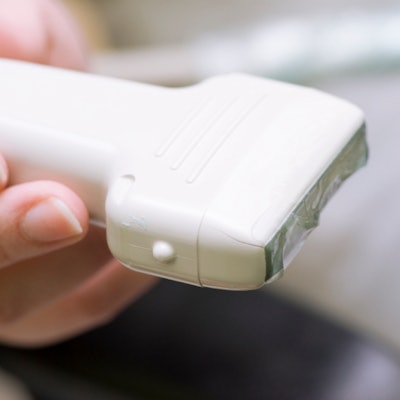
Point-of-care ultrasound (POCUS) may help physicians make timely and accurate decisions for patients admitted to the hospital with chest pain or shortness of breath, according to the findings of a pilot study published on May 16 in Ultrasound in Medicine & Biology.
The small, randomized clinical trial found that the use of bedside ultrasound scans shortened the time to treatment for patients at one hospital in Israel. It also changed the primary diagnosis of the patient in 28% of cases.
"We have found that POCUS assessment, integrated early into the routine care of these patients, led to significantly shorter times to appropriate treatment," wrote the authors, led by Dr. Yael Ben-Baruch Golan, an internist Soroka University Medical Center in Beer-Sheva, Israel. "The median time to appropriate treatment was shortened by 19 [hours] in patients who underwent a POCUS scan compared with those who did not."
For their single-center, randomized controlled trial, the authors enrolled 60 patients with respiratory or cardiovascular abnormalities who were admitted to an internal medicine ward. An emergency physician and internal medicine physicians performed initial examinations on all patients, including physical examinations, labs, and taking medical history.
Half of the patients were then randomly assigned to the POCUS group, in which they underwent bedside focused sonographic imaging of their heart, lungs, and inferior vena cava. POCUS screening occurred within one hour of patient randomization and 24 hours of hospital admission.
The physicians conducting the POCUS examinations were not part of the patients' care teams and were blinded to their management. They sent results to the patients' primary physicians and also added their findings to their electronic medical records.
One year later, the researchers looked at the diagnosis, treatment, and outcome data for all 60 patients in the study. The use of POCUS added clinically relevant findings for 79% of patients who underwent bedside scans. It also led to an additional diagnosis for 14% of patients and altered the previous diagnosis for 28% of patients.
Furthermore, the use of POCUS changed management strategies for about one-third of patients. Almost 35% of patients underwent additional imaging or had their time of discharge changed, and 31% received altered medication.
Although the researchers found no significant difference in the percentage of patients with a correct diagnosis, those in the POCUS group received appropriate treatment in a significantly shorter amount of time (five hours versus 24 hours). The POCUS group also received the correct diagnosis one day sooner than those in the control group, but the difference wasn't statistically significant.
"Trends toward reduction of time to correct diagnosis and higher rate of appropriate therapy were apparent in patients in the POCUS group versus control group, yet these findings did not reach statistical significance, probably because of the small sample size in our study," the authors wrote.
The authors cautioned that while the results look promising, their study only had a few patients and it took place at a single institution. They hope future randomized clinical trials build upon the study foundation and validate whether POCUS can lead to accurate, timely diagnosis and management for hospitalized patients.
"This is the first randomized controlled trial indicating that incorporation of the POCUS exam into the early diagnostic routine workup of patients admitted to the medical ward with chest pain or dyspnea reduces time to appropriate therapy," the authors concluded. "These results should be further investigated in larger prospective studies to strengthen the evidence that POCUS assessment affects clinical outcomes."


















